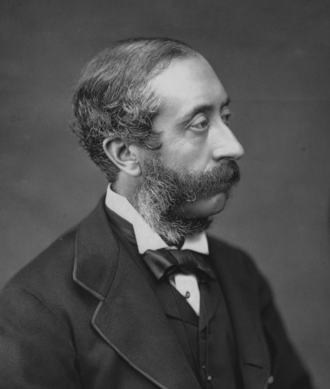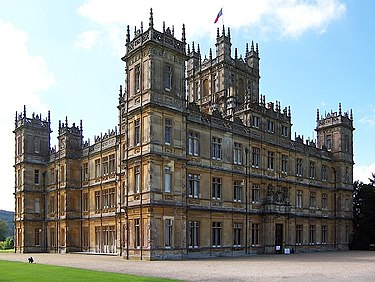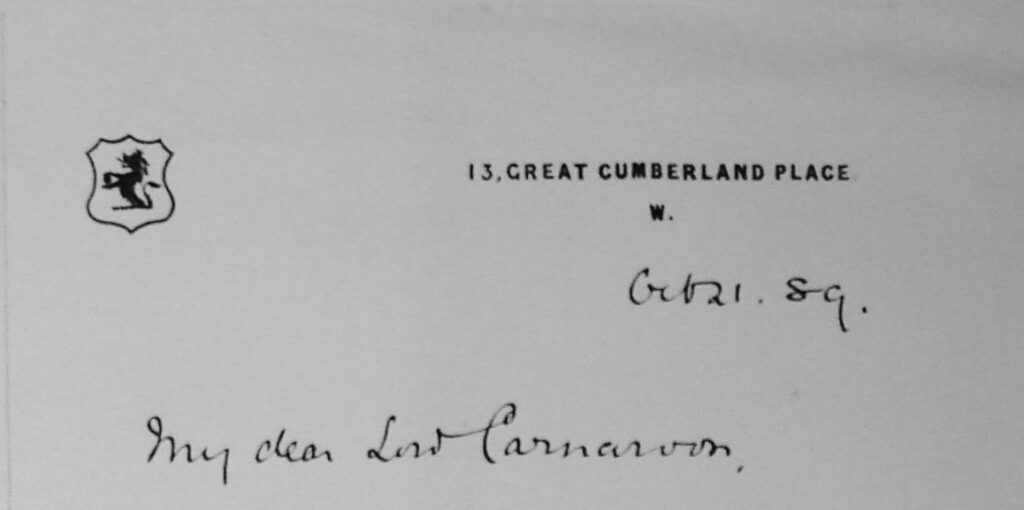
Two letters, October 1889, from Theodore Bent to Henry Howard Molyneux Herbert, 4th Earl of Carnarvon, KP, PC, DL, FRS, FSA (24 June 1831 – 29 June 1890), Highclere Castle, Hampshire, UK. The original letters are now in the Hampshire County Archives (75m91/R13/40-41). Carnarvon’s original letters to Bent have not surfaced; the latter would have had a fascinating correspondence archive but it is presumed lost. The reply to Bent’s first letter must have been exceedingly positive, as can be deduced by the speed in which the meeting was arranged and the much less formal style of Bent’s second communication.

Background: The Bents spent early 1889 in the Middle East, with a few weeks excavating at the ‘mounds of Ali‘, Bahrain, and then riding south-north the length of Persia before returning to London via Kiev. The couple’s explorations for the following season (1890) were clearly unfixed (and time was pressing) when Bent sought to make contact with Henry Herbert, 4th Earl of Carnarvon at Highclere, hopefully to smooth (and perhaps co-finance) his passage to the Bulgarian region of Burgas on the Black Sea.

Why especially Bent had his sights set on this area is still to be researched and answers might be found in extant communications between Bent and Cecil Smith (see Letter 1). One factor would have been that the sites (and any discoveries there) were unlikely to have the levels of official scrutiny he was exposed to in Greece and Turkey – but some of the material culture from there would, of course, reflect the lives of ancient Greek colonies. In the end, for whatever reason, the Bents opted in 1890 for the Turkish littoral, settling for squeezes of early inscriptions and determined to find ancient Olba (which they did). Sadly, Bent’s affable correspondent was to die relatively young in that same year (1890), being succeeded by the 5th Earl, ‘Tutankhamen’ Carnarvon.
Letter 1 – Bent to Carnarvon
13, Great Cumberland Place, W. [London]
Oct. 16 [1889].
My Lord,
Mr Cecil Smith tells me you have kindly promised to help me with regard to certain excavations I hope to undertake near Bourgas at the beginning of the year [1890].
My object is to get a personal introduction to Mr. [Stefan] Stambolov but if I might speak to you on this matter at any hour you like to name I think I could explain matters more definitely.
I am your Lordship’s obedient servant,
J. Theodore Bent
Notes:
Bent’s friend Cecil Harcourt Smith, 1859-1944, of the British Museum and later the V & A.
Burgas (Bulgaria), ancient port on the Black Sea.
Stefan Stambolov, 1854-1895, Bulgarian politician, journalist, revolutionary, and poet who served as Prime Minister and regent. He was assassinated in Sofia in 1895.
Letter 2 – Bent to Carnarvon
13, Great Cumberland Place, W. [London]
Oct. 21 [1889].
My dear Lord Carnarvon,
It will give me great pleasure to accept your kind invitation to visit you at Highclere, and I will come down to Newbury on Saturday next [26th] by the train you name.
I remain my Lord,
Yours faithfully,
J. Theodore Bent
 Leave a comment or contact us about this article
Leave a comment or contact us about this article